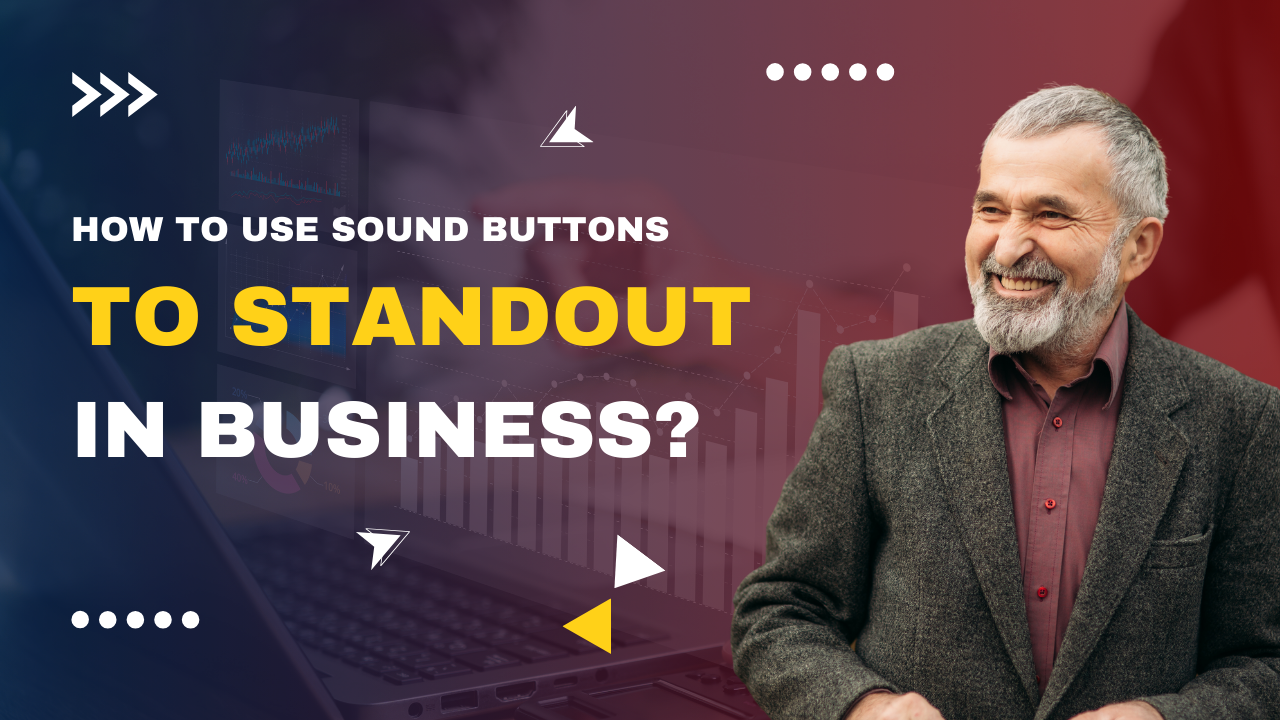How Small Businesses Are Using Sound Buttons to Stand Out Online in 5 Points
Small businesses today are competing with each other fiercely in the virtual space. They need to get creative with their budgets and limited resources in order to make their brand shine through the noise. Another surprisingly successful tool that has been around has been the sound button. These brief, clickable audio clips are being deployed as attention-grabbers, personality-builders and user experience enhancers for all forms of social media, websites and mobile apps. In this article, we’ll look at 5 significant ways that small businesses are choosing to use sound buttons to get noticed online.

1. Grabbing Attention on Social Media
Social media is extremely crowded real estate, and businesses only have a few seconds to grab a user’s attention. Sound buttons give small businesses short, impactful audio so they can cut through the noise.
For example:
A bakery, for instance, might use a chipper “Ding!” sound button announcing fresh batches of cookies in an Instagram Story.
Maybe a clothing store could benefit from “Cha-ching!” pum. sight when notifying a flash sale.
These micro audio triggers bring on the spot engagement which makes posts interactive (or not). When they hear an unexpected, catchy sound, users are more likely to stop scrolling.
Why it works: The sound buttons not only enhance the content from social media but also provide a little extra sensory appeal, making it easier to remember (and fun while doing so).
2. Enhancing Website User Experience
Our sound buttons are also being used by small businesses to breath life into their website, engaging potential customers. Sound buttons make websites feel alive and friendly, confirming purchases and promoting special deals.
For instance:
A store online might play a quiet “Pop!” only on item add to cart sound.
A subscription site could use a “Woohoo!” to celebrate. Tweak this to add some sound when a user successfully signs up.
The purpose of these sound cues is to walk users through the website and give feedback in a matter of seconds, making actions feel rewarding.
Why it works: Sound buttons add depth and fun to websites.

3. Adding Personality to Brand Identity
When it comes to small businesses, they heavily prominent on having a personality that looks to hit home with users, and sound buttons are just the right touch for brand identity.
For example:
An eccentric coffee shop might opt for a “Steaming Espresso! sound button located in their mobile app.
A fitness studio might have a motivational “You got this!” sound when users book for their workout sessions.
These audio cues become a building block of the brand’s voice, helping small businesses make an impression and stick in the minds of their customers.
Why this works: Sound buttons give human warmth to what would otherwise be sterile digital interactions, and further highlight the brand's unique personality.
4. Boosting Engagement in Marketing Campaigns
Many marketing campaigns are also about capturing attention quickly and stimulating the audience to play. Sound buttons are now being used as a creative element for brands looking to drive engagement from digital campaigns.
For instance:
An email newsletter could have a sound button you can click that says “Click here for a surprise!”
The announcement of a contest could have a “Drumroll! 1 sound button to create some buzz.
Sound buttons are an interactive feature of campaigns that encourage users to engage and remain engaged.
Why it works: Adding interactive elements like sound buttons brings an element of playfulness and excitement, which increases engagement.

5. Standing Out in Live Streams and Videos
A lot of the marketing options are about grabbing attention within seconds, and getting the audience to play. One emerging trend is the use of sound buttons as a creative feature for brands seeking to drive engagement from their digital campaigns.
For instance:
An email newsletter might have a sound button you click that says “Click here for a surprise!”
The announcement of a contest might bring a “Drumroll! One sound button to generate a little buzz.
Sound buttons are an interactive campaign feature that brings users in and keeps them around.
Why it works: Adding dynamic elements such as sound buttons adds elements of fun and surprise, resulting in increased engagement.
Conclusion
Sound buttons, a simple yet powerful tool, are helping small businesses capture the attention of their audience online. They capture attention, mine user experience, particularly add personality, increase engagement, and simply make live content fun. Sound buttons are especially attractive due to their low price and the fact that they can easily be added across various digital platforms.
Sound buttons are easy and inexpensive for small businesses to afford since they have to compete against larger brands in the digital sphere. Whether it’s a quick “Ding!” on social media or a celebratory “Woohoo! on a website, sound buttons are helping small businesses create a big noise online.
The innovative application of sound buttons will likely increase as digital trends become more complex, opening up new opportunities for businesses to interact with their audience in entertaining and forward-thinking methods.